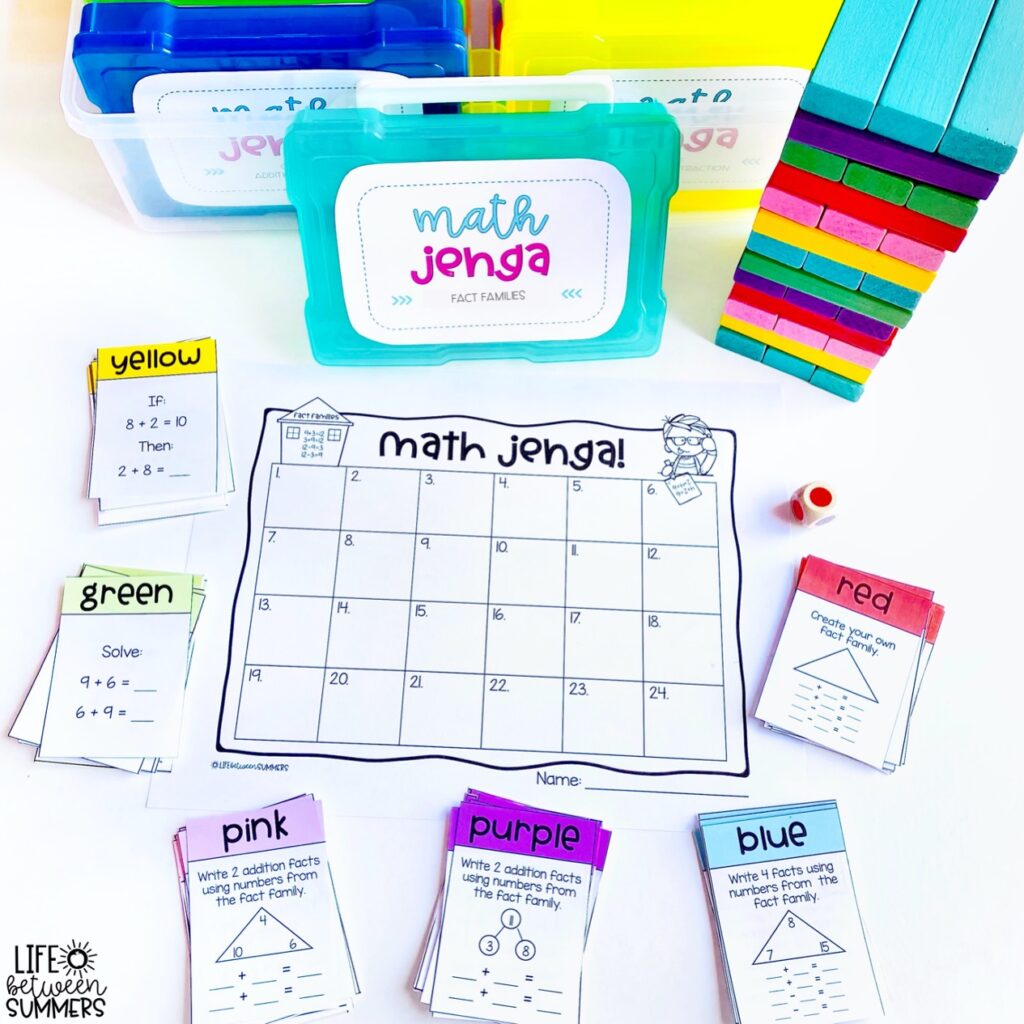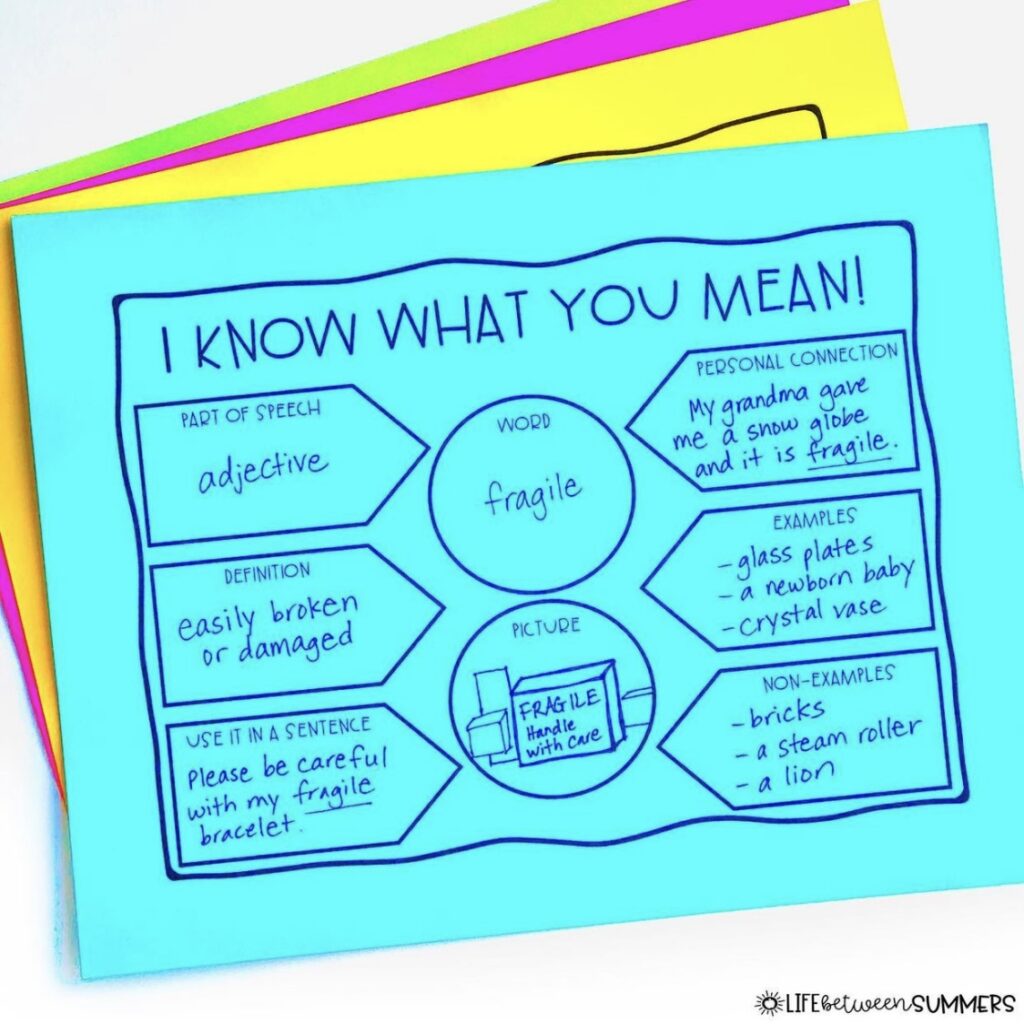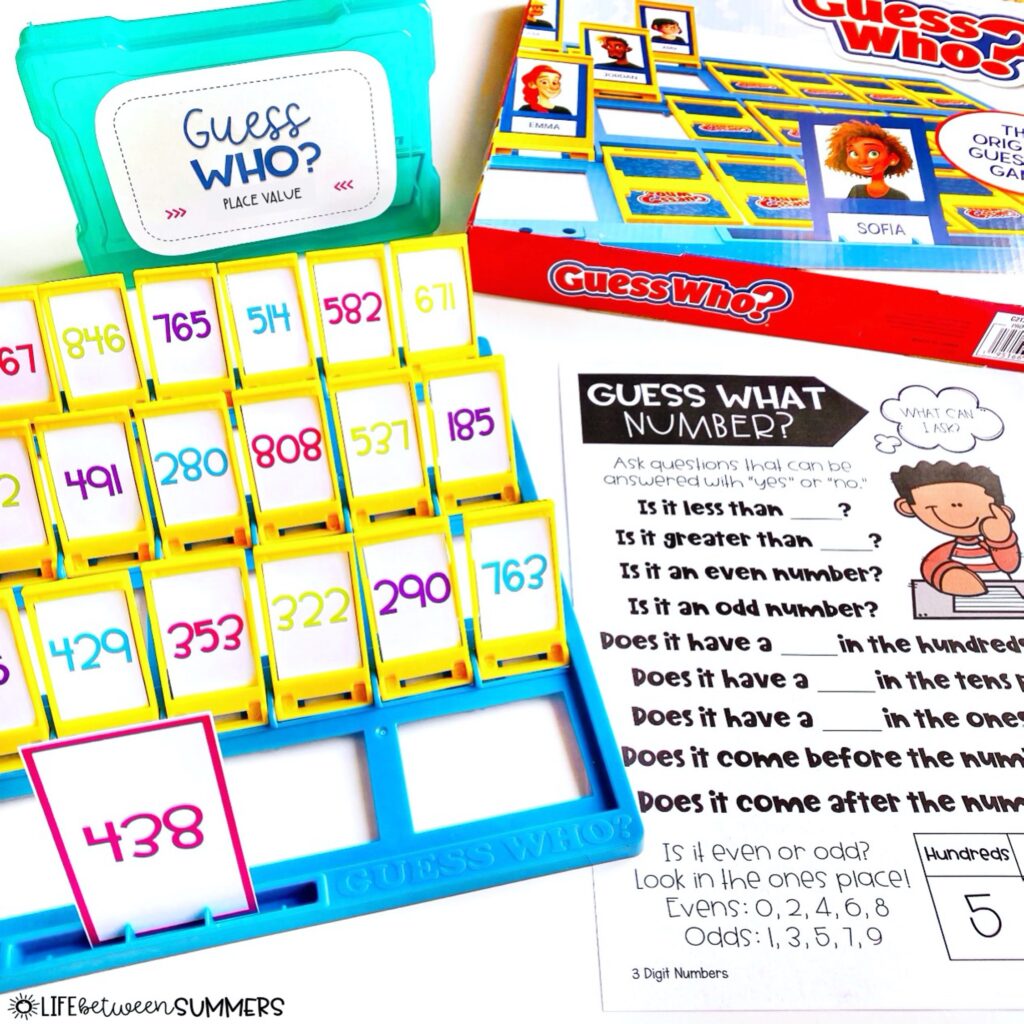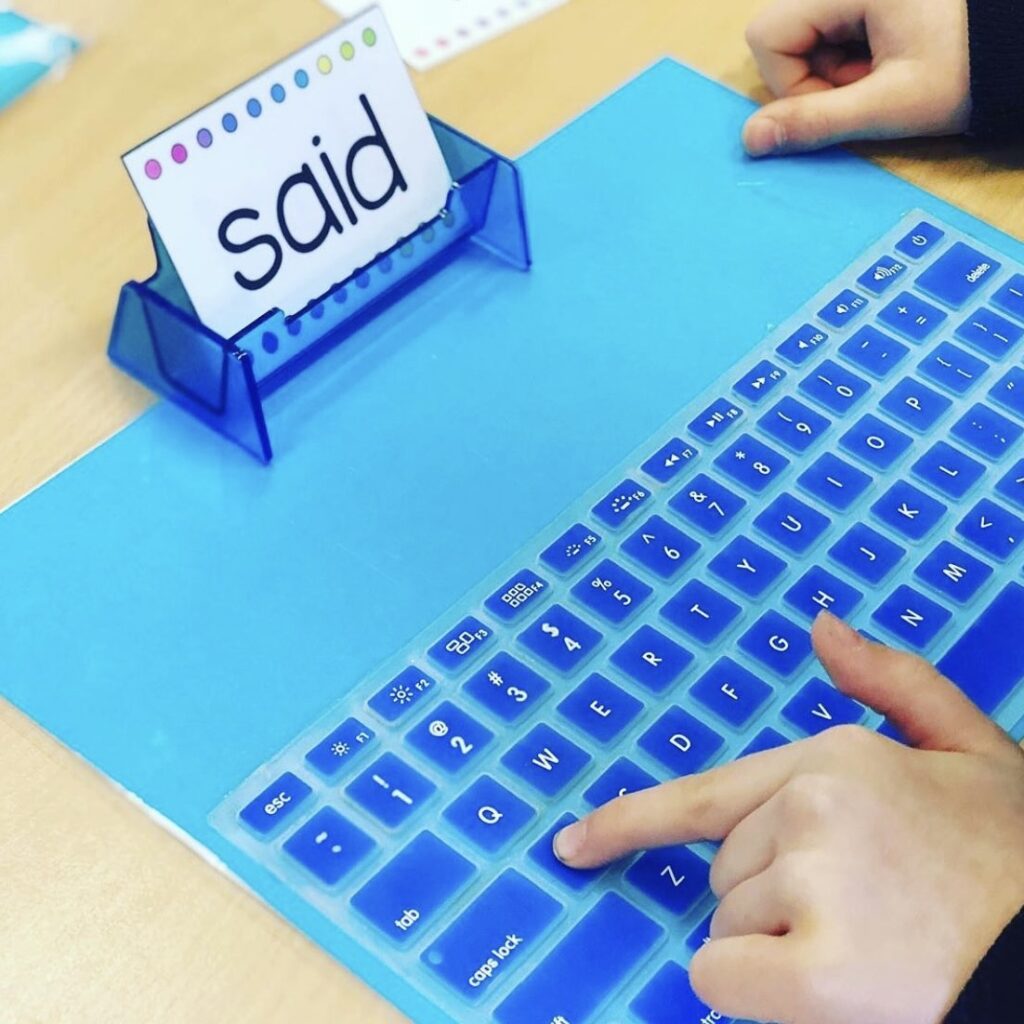“I’m done!” It’s a phrase that every teacher has heard before. While it’s common to have students who need more time to finish assignments, there are also the ones who breeze through it quicker than you can say, “Slow down and check your work.” Early finisher activities are therefore a must-have!
And it is key to have meaningful options for your faster finishers. Busy work isn’t exactly the best “reward” after completing the required work. When it comes to quality early finisher activities, student choice and high engagement are the key ingredients.
If you’re in need of some ideas to help meet the needs of your more efficient little workers, feel free to pick and choose through this list of early finisher activities.
Activity #1: Choice Boards
Speaking of pick and choose…choice boards allow students to do exactly that! They are a great way to encourage student choice (and increase the buy-in factor). Choice boards can be simply printed on a sheet of paper, displayed on an actual board, or even accessed digitally.
Choice boards can include anything from spiral review, to hands-on activities, to creative projects. In fact, any of the activities shared in this blog post could be added to a Choice Board.
If you type in “Choice Boards” on Teachers Pay Teachers and check the price filter box that says “Free,” there are tons of free options for printable choice boards.
As far as paid resources go, I’m a fan of this particular one from A Cupcake for the Teacher. It has a nice variety of everyday activities, plus ones that are themed for each month.
Activity #2: Class Mailbox
This early finisher activity is a great way to practice writing skills and build classroom community at the same time.
Have a designated class mailbox where students can send letters to other students, or even the teacher. It doesn’t have to be fancy. You can use a paper tray or some sort of container, or even have the kids themselves help make or decorate one. Another option is to utilize a toy mailbox, like the one Activity #3: Jenga
From my own experience- whenever Jenga is an option for early finishers, it is always one of the most popular activities that kids pick first! You can use All players solve the problem and record their answer on their recording sheet, and check their answers together. Then, the initial player who drew the card gets to move a color block. And repeat! The kids can’t get enough of it, especially since you can keep the game fresh all year by easily switching out the cards for different skill practice. You only have to teach the game once, and can then use it as an engaging early finisher activity for the whole school year. In case it might save you any time, I have a ton of pre-made print-and-go Jenga games for math, phonics, grammar, sight words, and more. There is also an editable template of the recording sheet and color cards above to be able to create your own problems or questions. All of the details are in this blog post. As you might have guessed from Activity #3, I love the use of games for early finisher activities. Here’s another one that’s based on a classic. This Guess Who? math game is exactly like the original version except that instead of guessing “who” is on the card, students have to use their math skills and math vocabulary to guess “what” is on the card. The game pictured above is for place value, but there are also versions for: You can get more details about Guess Who and all the different math versions by clicking right here. Do your students love stickers? This simple writing activity is engaging for early finishers, especially if they enjoy using their creativity. Keep a variety of stickers in an easily accessible place, such as a bin or basket. Students can get to choose a few of those stickers and grab a sheet of writing paper. They then use those stickers to create their own sentences and stories, and illustrate a picture to match. For example, a student might have a sticker of a butterfly and a car. They might create a story and illustration where a butterfly goes along for a ride on someone’s car and explores a new place! As a twist, you could allow students to insert stickers in place of actual words in the sentence. If the sentence was The caterpillar turned into a butterfly, for instance, the student would place a sticker where it would say butterfly instead of writing out the actual word. You can get more ideas for sticker stories in this other blog post from Teach Junkie. Got word study lists for spelling, high frequency words, vocabulary, etc.? Hands-on word work activities are great for early finishers. There are all kind of ways students can practice their words, including: Here’s a visual of that third option (photo credit: Miss Learning Bee). What’s nice is that this doubles as keyboarding practice too. If you’ve ever tried to help 30 primary students log into their devices at the beginning of the year, you know that they need it! There are all kinds of Business card holder“>business card holder
Activity #4: Guess Who Games
Activity #5: Sticker Stories
Activity #6: Engaging Word Work
Another word work activity that kids love is Rainbow Roll and Write.
This resource is on Teachers Pay Teachers and on my website. Bonus! It’s editable, so you can customize it for your students if needed.
And if you like to include vocabulary words with your Word Work, this graphic organizer is a freebie!

You can also click here if you’d like more strategies and ideas for teaching vocabulary words.
And if you don’t have your own word lists, Merriam-Webster posts a word of the day everyday! Typically, they are words most people haven’t heard of, and therefore make for interesting word study. Those words lend themselves well to this graphic organizer too.
Activity #7: Special Interest Projects
What better way to engage your early finishers than through projects that interest them? Simply create a few project descriptions with instructions, and have them ready to go for early finishers. Then, allow students to choose what interests them. Here are a few ideas:
- Create a comic book
- Create an advertisement for your favorite product
- Write a creative story
- Create word problems for your classmates to solve
- Design your own amusement park
You could even invite students to propose their own project ideas to you, and add them to the list!
Activity #8: Accountable Talk Board
This is one of my favorite ways to engage students in inquiry and to utilize bulletin boards in an interactive way.
With this accountable talk board, students can pose questions or make statements that encourage discussion.
These posts could be related to something the class is currently learning about, something inspired by a book they’re reading, or just anything they might be wondering about.
For example, a student might write: “Why is it daytime here and nighttime in other places in the world?” or, “There should be no dress code at school.”
When a student finishes an activity early, they could have the option of going to the accountable talk board to engage. They might make their own post, and/or they can respond to a post from one of their classmates. The posts can be made on sticky notes.
More details about this resource (and the links for creating this same bulletin board) are in this blog post.
Activity #9: Tech Time
If you have access to computers, laptops, or tablets in your classroom, here are some go-to educational sites for early finishers:
- TED Ed – Have them watch a TED Ed video and summarize it.
- IXL Learning – Great for math and reading practice.
- Kahoot! – Find a Kahoot! and get the link for the independent mode.
- Quizlet – Create a quizlet deck with word study words, vocabulary, or facts and have students practice.
- WriteReader – Students can create their own novels and add images.
- StoryBoardThat – Students can create a comic strip.
Activity #10: Good Old-Fashioned Reading
While tech can be a helpful academic tool, nothing beats a good ol’ book! When students finish work early, one of their choices could be independent reading. Simple as that, just help to promote a love of reading for pleasure!
If you’re wanting more accountability, you could have them read together with a partner, answer reflection questions as they read, or participate in a book club or literature circle.
Activity #11: Walk the Room
For students who get restless easily and thrive with movement (i.e., most kids) Walk the Room is an easy go-to activity for early finishers. It gets students out of their seats, but with a specific focus. Just be sure to set the behavior expectations beforehand, to help prevent them from disturbing others who are seated while working.
Here are some examples of Walk the Room activities (students could carry a clipboard with them for any of these):
- For measurement math practice, students measure various objects around the classroom. You could have them estimate the measurement first, and then check with a ruler and record their findings.
- Tape task cards around the room and have students answer them on a recording sheet.
- Send students on a word hunt.
Here’s an example of a homophone word hunt. I placed different homophones around the room for kids to search for.
If you teach homophones and like this activity, more on this resource right here!
Activity #12: Peer Helpers
If you can teach it, you know it. At least that’s what they say, right? And for good reason. Having your early finishers help other students is a great way to embrace collaboration in the classroom.
As you would with pretty much anything you introduce to your class, just again make sure to set clear guidelines for what peer helping means and what it looks like. And what it doesn’t mean (doing someone else’s work for them).
To aid students in how to be an effective peer helper, I’m a big fan of checklists. Students can refer to points or questions on a checklist as a guide.
Here are some peer helper checklists for writing, for example. Students use these to help their peers with editing a rough draft.
For students who finish their work early during a writing block, getting to be a peer editor is a privilege that they jump at the chance to get to do! The baseball-themed writing checklists you see pictured above can be found by going here.
Activity #13: Teacher’s Helper
Early finisher activities don’t always have to be academic. Most elementary-age kids (especially in the primary grades) love to help out grown-ups at home or school. And that doesn’t always last as they get older…so why not enjoy it while we can, right? 😉
On a more serious note though, giving students the opportunity to help with special tasks encourages traits like responsibility and helpfulness. Here are some of those types of tasks:
- Cleaning the whiteboard
- Filing papers
- Organizing materials
- Picking up trash (they especially enjoy when you give them a magnet to pick up any staples on the floor)
- Sharpening pencils
I’m sure there is no shortage of things on your to-do list, and there are plenty that students can help with!
Hopefully this list has helped get your wheels turning when it comes to early finisher activities! I’ve found from personal experience that there is no need to implement a ton of choices all at once. You may start with just a small few, and then add on more or change some out throughout the year, to help keep things fresh for your kiddos.
And truth be told, I’m writing this blog post on a Friday afternoon. Even though there’s always more work to be done, I’m deciding in this moment to be an “early finisher.” Turning off my laptop now and going to go enjoy the weekend! 😉
For teachers, work is never really done so to speak, so sometimes you just have to call it a day and leave it for another time. Hopefully you can soon find some time to step away as an early finisher yourself!





Leave a Reply
You must be logged in to post a comment.